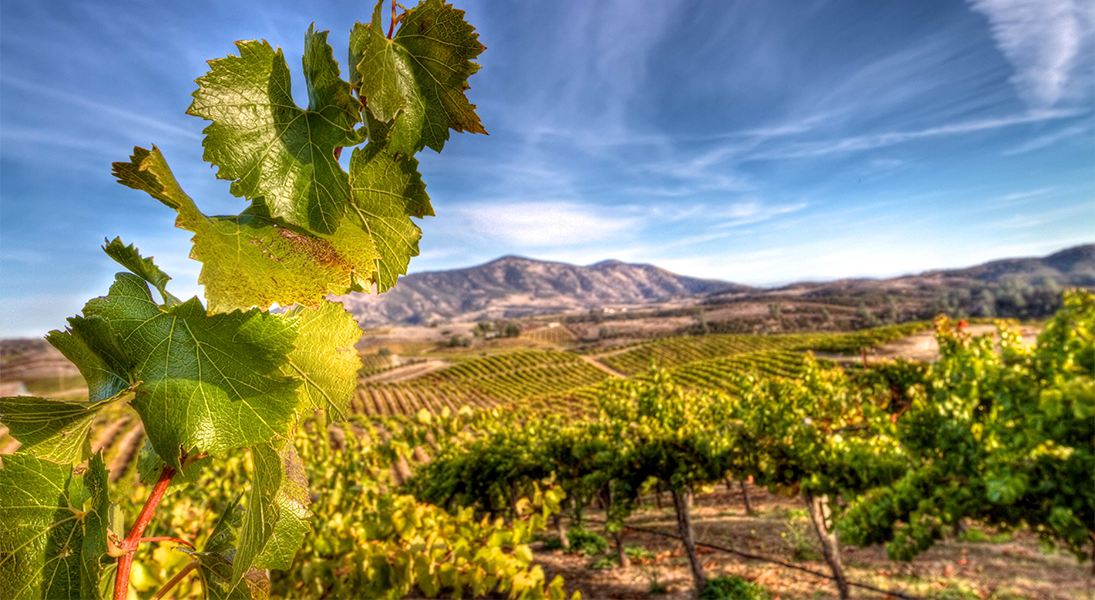
Sustainable Farming
We are passionate fanatics who grow grapes at this estate vineyard to express its terroir. By growing every grape in the vineyard to achieve homogeneity of ripeness, we cultivate rich flavors in our wines. Our vineyard is one of the few in the U.S. that grows grapes in limestone-based soils, and has a microclimate unique in Monterey County. Because of its uniqueness, the area surrounding Chalone was granted its own American Viticultural Area.
A volcano 28 million years ago sculpted what is now the Pinnacles National Park, which sits astride the San Andreas Fault. The fault separates the Pacific plate from the Continental plate, and has long interacted with the Pinnacles, alternately dividing and forming a fork around the other side of the formation, resulting in its sinking slowly into the mountain range. The majestic Pinnacles border Chalone Vineyard and its silhouette is depicted on our label.
We conform to the Burgundian concept that great vineyards are naturally low-vigor and have small crop loads. Generally, the French believe that you shouldn’t have to drop crop but should find sites that naturally regulate themselves. The ability to achieve true ripeness coupled with minerality and limited vigor defines Chalone Vineyard’s terroir and viticultural area.
Irrigation
Chalone Vineyard’s remote location and rugged terrain provide challenges to growing grapes. To maintain vine health and proper grape chemistry, substantial irrigation is required to augment our normally sparse rainfall. Approximately 200-acre feet of water (1 acre foot = 325, 851 gallons) are used annually to irrigate the vineyards. We have found that with the appropriate amount of irrigation water, the pH, acidity and flavor of the grapes are greatly improved over grapes that are either not irrigated, or receive water for only part of the growing season. Because we have to pump the water almost eight miles from the valley floor, the cost to grow here is greater than in other wine growing regions.
Pest Management
Our main vineyard pests and diseases are the grape leafhopper, the Willamette mite, occasional mealy bugs, several species of nematodes, grape-loving wildlife (gophers, deer, birds, rabbits and ground squirrels) and last, but perhaps most bothersome, powdery mildew.
We use integrated pest management, a philosophy that dictates using the minimum inputs needed to control a specific problem as well as attempting to balance the environment to control long term problems. For example, a prune orchard was planted to host wasps, which feeds on leaf hoppers. Cover crops provide beneficial insect habitats, improved soil tilth and fertility, and control erosion. We eagerly participate in-vineyard trials of new organic and IPM materials for vineyard pest control. Examples are AQ10 (a predatory fungus to control powdery mildew), hopper tape (a giant version of flypaper), various organic soaps, and microfine oils. These are sometimes effective, often expensive, but provide promising alternatives to the use of conventional vineyard chemicals.
Much of the high cost of farming here is the result of the extensive hand labor needed in hillside vineyards. Pruning, training, tying, harvesting, as well as other operations, are all performed by hand to maximize the quality in each bunch of grapes.
